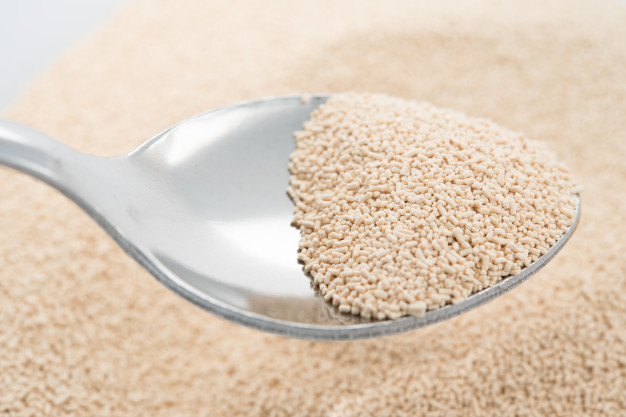Instant Yeast
There are different types of yeast and different forms of yeast. Choosing the right type of yeast for your dough is not an easy choice at all, as there are many types of yeast and each type has a specific way of placing it in your pastries, and each effect has a different effect to get an excellent people for your dough .and choose the best type of yeast
- Types of yeast
The difference between active dry yeast and instant yeast
The difference between these types of dry yeast is simple, the active dry yeast has larger granules, and you need to dissolve them in water before adding them to the dough, while the instant ones have a softer texture, and can be added directly to the dry ingredients.
- Active dry yeast
It is the form of yeast in the minds of many of us, with its circular granules that are dissolved in warm water and then added to dry ingredients so that magic begins to happen, and it is sold in boxes in various forms.
- Instant yeast
Instant yeast is another type of dry yeast, and it is made the same way as active dry yeast, but it is dried faster, and it looks smoother, so it is dissolved in the ingredients faster, and the result is clearer quickly.
What type of yeast should I use ?
This answer belongs to you, for each yeast has its uses, and it is also due to your personal comfort, or the time you devote to the dough until it is brewed.
These two types of yeast can be switched easily, although instant yeast is faster to produce, but only a quarter of an hour which is not a very big difference.
Can you reduce or increase the amount of yeast to control the time of fermentation
The amount of yeast used controls the time the dough takes to ferment. If you reduce the yeast, the time for fermentation will increase, and vice versa
But it must be taken into account that fermentation is a delicate chemical process, meaning that if you put more yeast carbon bubbles will form quickly, but the gluten will remain insufficient to obtain the ideal dough consistency, so the result will not be satisfactory.
But you can reduce the amount of yeast, because the length of time for fermentation with less yeast preserves its taste and texture without any bad side effects.
It is better to form the dough in the middle of the fermentation process, that is, to form the dough as you want and then cover it and leave it to continue fermentation
What are the factors that affect the work of yeast?
There are many factors that affect the work of yeast and the precise process of fermentation, including room temperature, which affects the dough, whether negatively or positively. Cold may be better sometimes.
Sugar and salt both delay the action of yeast and its effectiveness, because they draw water from the yeast cells. A small amount of sugar activates the yeast, but when the quantity increases, it reduces its effectivenes

Instant yeast

Active dry yeast